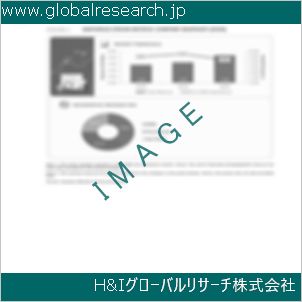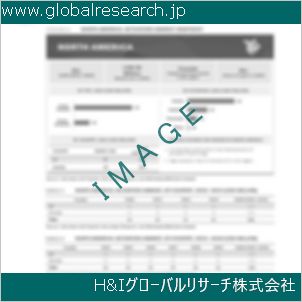Table of Contents
1 Industry Overview of Methyl Acetate
1.1 Definition and Specifications of Methyl Acetate
1.1.1 Definition of Methyl Acetate
1.1.2 Specifications of Methyl Acetate
1.2 Classification of Methyl Acetate
1.3 Applications of Methyl Acetate
1.3.1 Nuclear Application
1.3.2 Non-Nuclear Application
1.4 Industry Chain Structure of Methyl Acetate
1.5 Industry Overview and Major Regions Status of Methyl Acetate
1.5.1 Industry Overview of Methyl Acetate
1.5.2 Global Major Regions Status of Methyl Acetate
1.6 Industry Policy Analysis of Methyl Acetate
1.7 Industry News Analysis of Methyl Acetate
2 Manufacturing Cost Structure Analysis of Methyl Acetate
2.1 Raw Material Suppliers and Price Analysis of Methyl Acetate
2.2 Equipment Suppliers and Price Analysis of Methyl Acetate
2.3 Labor Cost Analysis of Methyl Acetate
2.4 Other Costs Analysis of Methyl Acetate
2.5 Manufacturing Cost Structure Analysis of Methyl Acetate
2.6 Manufacturing Process Analysis of Methyl Acetate
3 Technical Data and Manufacturing Plants Analysis of Methyl Acetate
3.1 Capacity and Commercial Production Date of Global Methyl Acetate Major Manufacturers in 2023
3.2 Manufacturing Plants Distribution of Global Methyl Acetate Major Manufacturers in 2023
3.3 R&D Status and Technology Source of Global Methyl Acetate Major Manufacturers in 2023
3.4 Raw Materials Sources Analysis of Global Methyl Acetate Major Manufacturers in 2023
4 Capacity, Production and Revenue Analysis of Methyl Acetate by Regions, Types and Manufacturers
4.1 Global Capacity, Production and Revenue of Methyl Acetate by Regions 2019-2024
4.2 Global and Major Regions Capacity, Production, Revenue and Growth Rate of Methyl Acetate 2019-2024
4.3 Global Capacity, Production and Revenue of Methyl Acetate by Types 2019-2024
4.4 Global Capacity, Production and Revenue of Methyl Acetate by Manufacturers 2019-2024
5 Price, Cost, Gross and Gross Margin Analysis of Methyl Acetate by Regions, Types and Manufacturers
5.1 Price, Cost, Gross and Gross Margin Analysis of Methyl Acetate by Regions 2019-2024
5.2 Price, Cost, Gross and Gross Margin Analysis of Methyl Acetate by Types 2019-2024
5.3 Price, Cost, Gross and Gross Margin Analysis of Methyl Acetate by Manufacturers 2019-2024
6 Consumption Volume, Consumption Value and Sale Price Analysis of Methyl Acetate by Regions, Types and Applications
6.1 Global Consumption Volume and Consumption Value of Methyl Acetate by Regions 2019-2024
6.2 Global and Major Regions Consumption Volume, Consumption Value and Growth Rate of Methyl Acetate 2019-2024
6.3 Global Consumption Volume and Consumption Value of Methyl Acetate by Types 2019-2024
6.4 Global Consumption Volume and Consumption Value of Methyl Acetate by Applications 2019-2024
6.5 Sale Price of Methyl Acetate by Regions 2019-2024
6.6 Sale Price of Methyl Acetate by Types 2019-2024
6.7 Sale Price of Methyl Acetate by Applications 2019-2024
6.8 Market Share Analysis of Methyl Acetate by Different Sale Price Levels
7 Supply, Import, Export and Consumption Analysis of Methyl Acetate
7.1 Supply, Consumption and Gap of Methyl Acetate 2019-2024
7.2 Global Capacity, Production, Price, Cost, Revenue, Supply, Import, Export and Consumption of Methyl Acetate 2019-2024
7.3 USA Capacity, Production, Price, Cost, Revenue, Supply, Import, Export and Consumption of Methyl Acetate 2019-2024
7.4 EU Capacity, Production, Price, Cost, Revenue, Supply, Import, Export and Consumption of Methyl Acetate 2019-2024
7.5 China Capacity, Production, Price, Cost, Revenue, Supply, Import, Export and Consumption of Methyl Acetate 2019-2024
7.6 Japan Capacity, Production, Price, Cost, Revenue, Supply, Import, Export and Consumption of Methyl Acetate 2019-2024
8 Major Manufacturers Analysis of Methyl Acetate
8.1 Manufacturer One
8.1.1 Company Profile
8.1.2 Product Picture and Specifications
8.1.2.1 Type I
8.1.2.2 Type II
8.1.2.3 Type III
8.1.3 Capacity, Production, Price, Cost, Gross and Revenue
8.1.4 Contact Information
8.2 Manufacturer Two
8.2.1 Company Profile
8.2.2 Product Picture and Specifications
8.2.2.1 Type I
8.2.2.2 Type II
8.2.2.3 Type III
8.2.3 Capacity, Production, Price, Cost, Gross and Revenue
8.2.4 Contact Information
8.3 Manufacturer Three
8.3.1 Company Profile
8.3.2 Product Picture and Specifications
8.3.2.1 Type I
8.3.2.2 Type II
8.3.2.3 Type III
8.3.3 Capacity, Production, Price, Cost, Gross and Revenue
8.3.4 Contact Information
8.4 Manufacturer Four
8.4.1 Company Profile
8.4.2 Product Picture and Specifications
8.4.2.1 Type I
8.4.2.2 Type II
8.4.2.3 Type III
8.4.3 Capacity, Production, Price, Cost, Gross and Revenue
8.4.4 Contact Information
8.5 Manufacturer Five
8.5.1 Company Profile
8.5.2 Product Picture and Specifications
8.5.2.1 Type I
8.5.2.2 Type II
8.5.2.3 Type III
8.5.3 Capacity, Production, Price, Cost, Gross and Revenue
8.5.4 Contact Information
…
9 Marketing Trader or Distributor Analysis of Methyl Acetate
9.1 Marketing Channels Status of Methyl Acetate
9.2 Traders or Distributors with Contact Information of Methyl Acetate by Regions
9.3 Ex-work Price, Channel Price and End Buyer Price Analysis of Methyl Acetate
9.4 Regional Import, Export and Trade Analysis of Methyl Acetate
10 Industry Chain Analysis of Methyl Acetate
10.1 Upstream Major Raw Materials Suppliers Analysis of Methyl Acetate
10.1.1 Major Raw Materials Suppliers with Contact Information Analysis of Methyl Acetate
10.1.2 Major Raw Materials Suppliers with Supply Volume Analysis of Methyl Acetate by Regions
10.2 Upstream Major Equipment Suppliers Analysis of Methyl Acetate
10.2.1 Major Equipment Suppliers with Contact Information Analysis of Methyl Acetate
10.2.2 Major Equipment Suppliers with Product Pictures Analysis of Methyl Acetate by Regions
10.3 Downstream Major Consumers Analysis of Methyl Acetate
10.3.1 Major Consumers with Contact Information Analysis of Methyl Acetate
10.3.2 Major Consumers with Consumption Volume Analysis of Methyl Acetate by Regions
10.4 Supply Chain Relationship Analysis of Methyl Acetate
11 Development Trend of Analysis of Methyl Acetate
11.1 Capacity, Production and Revenue Forecast of Methyl Acetate by Regions and Types
11.1.1 Global Capacity, Production and Revenue of Methyl Acetate by Regions 2024-2029
11.1.2 Global and Major Regions Capacity, Production, Revenue and Growth Rate of Methyl Acetate 2024-2029
11.1.3 Global Capacity, Production and Revenue of Methyl Acetate by Types 2024-2029
11.2 Consumption Volume and Consumption Value Forecast of Methyl Acetate by Regions, Types and Applications
11.2.1 Global Consumption Volume and Consumption Value of Methyl Acetate by Regions 2024-2029
11.2.2 Global and Major Regions Consumption Volume, Consumption Value and Growth Rate of Methyl Acetate 2024-2029
11.2.3 Global Consumption Volume and Consumption Value of Methyl Acetate by Types 2024-2029
11.2.4 Global Consumption Volume and Consumption Value of Methyl Acetate by Applications 2024-2029
11.3 Supply, Import, Export and Consumption Forecast of Methyl Acetate
11.3.1 Supply, Consumption and Gap of Methyl Acetate 2024-2029
11.3.2 Global Capacity, Production, Price, Cost, Revenue, Supply, Import, Export and Consumption of Methyl Acetate 2024-2029
11.3.3 USA Capacity, Production, Price, Cost, Revenue, Supply, Import, Export and Consumption of Methyl Acetate 2024-2029
11.3.4 EU Capacity, Production, Price, Cost, Revenue, Supply, Import, Export and Consumption of Methyl Acetate 2024-2029
11.3.5 China Capacity, Production, Price, Cost, Revenue, Supply, Import, Export and Consumption of Methyl Acetate 2024-2029
11.3.6 Japan Capacity, Production, Price, Cost, Revenue, Supply, Import, Export and Consumption of Methyl Acetate 2024-2029
12 New Project Investment Feasibility Analysis of Methyl Acetate
12.1 New Project SWOT Analysis of Methyl Acetate
12.2 New Project Investment Feasibility Analysis of Methyl Acetate
13 Conclusion of the Global Methyl Acetate (CAS 79-20-9) Industry 2024 Market Research Report
| ※参考情報 酢酸メチル(Methyl Acetate)は、化学式C3H6O2で表されるエステルの一種です。CAS番号は79-20-9であり、主に有機化合物として広く利用されています。酢酸メチルは、酢酸とメタノールが縮合して生成されるため、その名が付けられています。ここでは、酢酸メチルの定義、特徴、種類、用途、関連技術について詳しく説明いたします。 酢酸メチルは、無色透明の液体で、特有の果実のような香りを持っています。揮発性が高く、エステルの中でも特に軽度の刺激性があります。水にはほとんど溶けませんが、多くの有機溶剤には良く溶ける特性があります。この溶解性は、酢酸メチルが多様な用途を持つ理由の一つです。 特徴としては、まず第一に、酢酸メチルは燃焼性があります。したがって、取り扱いには注意が必要です。さらに、室温で安定性があり、強い酸やアルカリに対しては比較的安定しています。一方で、酸化剤に対しては反応を示し、これも注意が必要な点です。 酢酸メチルにはさまざまな種類がありますが、主に工業用途で利用される合成用のものが一般的です。工業においては、酢酸メチルは一般的な溶剤として広く使用されており、特に塗料、接着剤、印刷インクなどの製造過程で重要な役割を果たしています。酢酸メチルは、油脂や樹脂の溶解を助け、その結果、製品の性能を向上させることができます。 さらに、酢酸メチルは、製薬業界や化粧品産業でも利用されています。たとえば、医薬品の合成過程において、反応溶媒として使用されることがあります。また、香料や加香料としても知られており、特にそのフルーティな香りが際立っているため、食品や日用品のフレーバーの調整にも使用されることがあります。 酢酸メチルのその他の用途には、農薬や除草剤の製造にも使われることが挙げられます。これにより、農業における病害虫の管理や作物の品質向上に寄与しています。また、エタノールの製造過程でも副生成物として得られることがあり、その場合、酢酸メチルを精製して用途に応じることが行われます。 このように酢酸メチルは、非常に多様な用途を持つ化合物であり、日常生活から工業プロセスに至るまで幅広く活用されています。近年では環境に配慮した代替溶剤としても注目されています。これにより、持続可能な発展を目指す現代のニーズに応じて、酢酸メチルの需要は増加しています。 現代の関連技術としては、酢酸メチルの製造過程が挙げられます。伝統的な化学合成方法に加え、バイオ技術を用いた製造方法も研究されており、再生可能な原料からの酢酸メチルの合成が試みられています。このような技術は、より環境に優しい方法として期待されています。 また、酢酸メチルの安全性に関する研究も進んでおり、取り扱い基準や規制が厳格化される中で、労働者の健康を守るための対策が講じられています。特に、刺激性があるため、皮膚や目に触れないよう注意が必要です。そのため、適切な個人防護具の着用や換気の確保が推奨されています。 酢酸メチルは、その特性から非常に多様な用途を持ち、化学工業や食品、医薬品などさまざまな分野で重要な役割を果たしています。今後、環境への配慮や持続可能な技術の発展によって、さらに新しい用途が開発されることが期待されています。これにより、酢酸メチルは引き続き注目される化学物質であり続けるでしょう。 |
❖ 免責事項 ❖
http://www.globalresearch.jp/disclaimer












